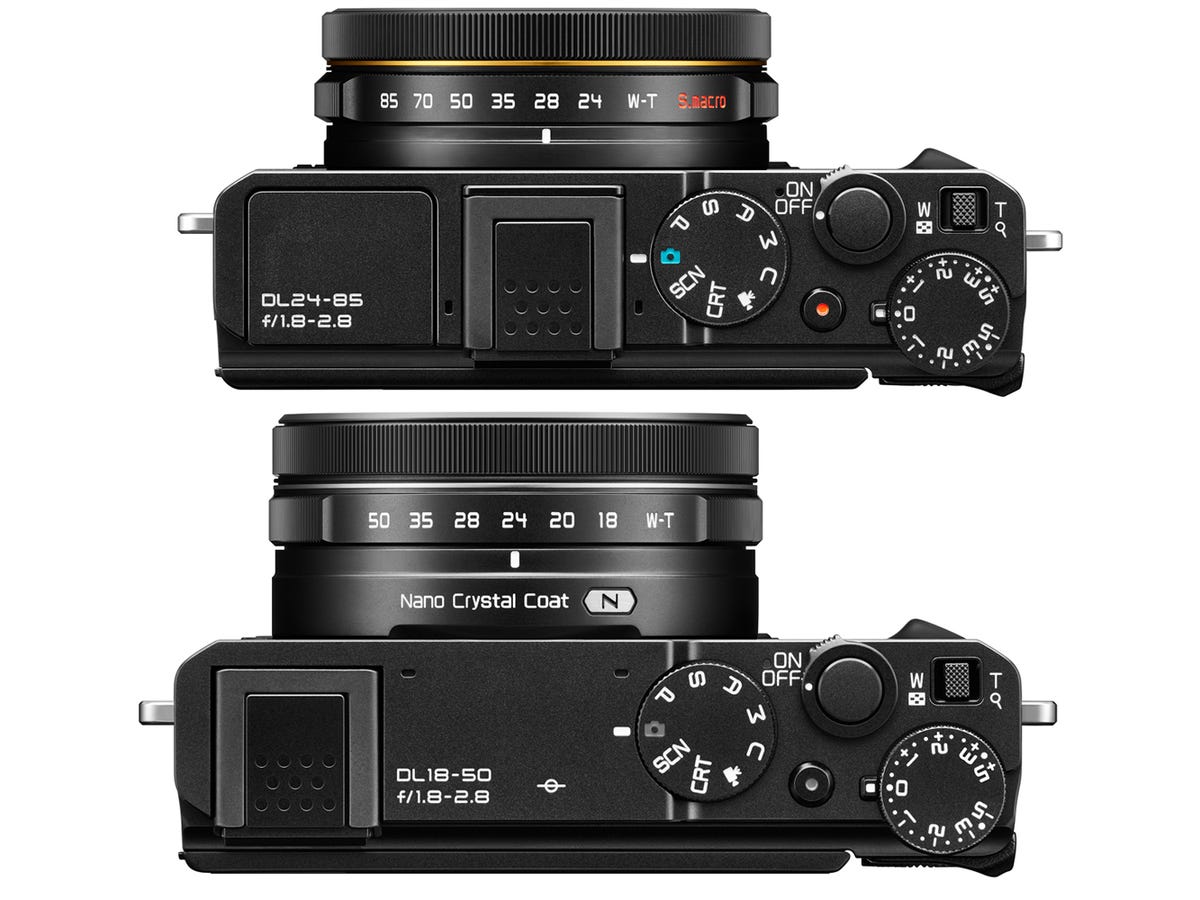
How they differ
This is the key view from which to differentiate the two cameras. The DL18-50 (bottom) is the higher-end model: you can tell because it incorporates Nikon's Nano Crystal Coat on the lens and lacks a flash, while the DL24-85 (top) has a Super Macro mode that lets you capture actual-size photos. While you'd think that would be a nice feature for the higher-end model, 1:1 capture in general requires a narrower angle-of-view lens than the DL18-50 has.
Both cameras: Flip for selfies
The display flips up for easier selfies and groupies, but it looks like you don't see the whole display in this position.
Both cameras: Lens hood
Nikon will offer an optional lens hood, generally a necessity with such wide-angle lenses.
Both cameras: Tilt
The LCD tilts for low-down shots.
Both cameras: Above the head
The display also tilts down for shooting above your head.
Both cameras: Optional EVF
The optional hot-shoe electronic viewfinder can tilt, which is a very nice way to shoot.
Both cameras: Features
They offer 4K video as well as Bluetooth for a persistent low-energy connection to supporting devices.
Both cameras: Back controls
The back has a typical control layout.
DL18-50: View from the top
Both cameras have a manual-aperture ring and a manual-focus ring.
DL18-50: Lens
The lens is longer at its widest angle than at its narrowest, which I tend to find a little disorienting.
DL24-85: Flash
The DL24-85 is considered a little more consumery, and includes a built-in flash.
DL24-85: Lens
The longer-zoom DL24-85 is about 0.2 inch deeper than the DL18-50.
DL24-85: Super Macro
The Super Macro mode, which allows you to shoot at 1:1 (actual size), is only available on this model.
DL24-85: Zoom
Unlike the DL18-50, the DL24-85's lens extends as you zoom in.

